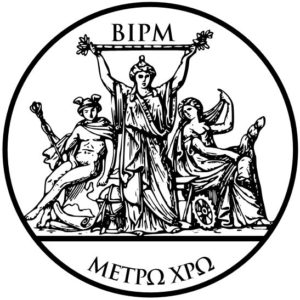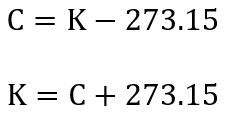The kelvin (K) is the unit of the international system used to measure temperature. The kelvin scale is an absolute thermometric scale as it has no negative values.
The misnamed Kelvin degrees
Although many people still call them Kelvin degrees, no doubt influenced by the Celsius or Fahrenheit degrees that we usually use, this is not their proper name.
Since the 13th CGPM (General Conference on Weights and Measures 1967/68) conducted by the International Bureau of Weights and Measures (Bureau International des Poids et Mesures or BIPM) its name is simply kelvin, with a lowercase ‘k’.

It also differs from other temperature measurement scales in that its symbol (K) does not have the characteristic ‘º’ that we usually see (ºC).
Origin of the scale and conversion
The temperature scale, created by William Thomson Kelvin (British physicist and mathematician), starts from what is known as absolute zero (0K), which is equivalent to -273.15ºC. This temperature is considered the lowest possible due to the fact that the particles that form any system have no movement and therefore no energy, at least according to the basis provided by classical mechanics.

So, if we take the origin at 0K we can conclude that the temperature at which water freezes is about 273K and evaporates at about 373K.
How to convert from degrees Celsius to Kelvin
As we have been able to deduce in the previous point, a variation of one kelvin corresponds to a variation of one degree Celsius. This means that going from kelvin to Celsius and vice versa is practically immediate. All you have to do is add or subtract, depending on the case, 273.15.

How to convert from degrees Fahrenheit to kelvin
Here the conversion process is more complex, since the increase by one point on the kelvin scale is equivalent to 1.8 on the Fahrenheit scale.
However, we can start from the Celsius-Fahrenheit equivalence and make the calculations from there:


That by replacing C by K-273.15 we would have:


Kelvin for light
In lighting, kelvins are used to define what is known as colour temperature, which you can see in more detail in this other article.
Briefly, the colour temperature is the temperature to which a black body (a theoretical object that absorbs all the energy) would have to be heated to have the same colour as the light source.
| Temperature |
|---|
| 1700K |
| 1850K |
| 2700K |
| 4000K |
| 5000K |
| 5500K |
| 6200K |
| 6500K |
| 9500K |
| Source |
|---|
| Match |
| Candle |
| Incandescent bulb |
| Mercury vapour lamp |
| Fluorescent tube |
| Daylight |
| Xenon lamp |
| Cloudy day |
| LCD television |
Diferentes fuentes de luz donde vemos el color de la luz que emiten y su temperatura de color correlacionada.

